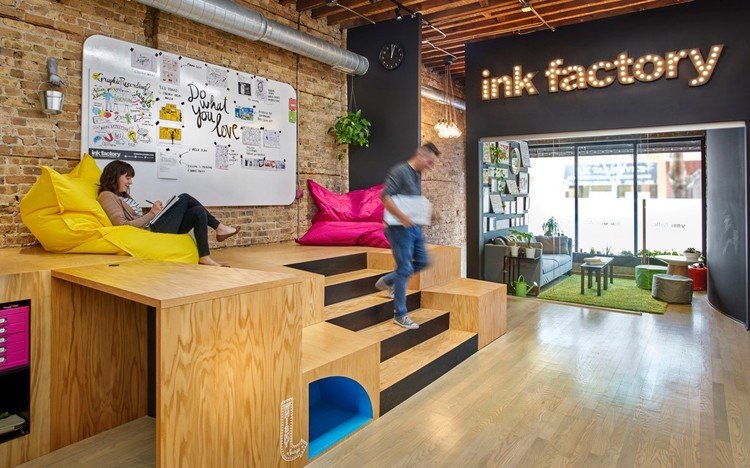At the core of any business, be it a multinational or a start-up , is its workforce. What separates good companies from the great ones generally lies with the talent within each organization. Driven, motivated and talented workers keep companies innovating and is what drives them to success.
In this regard, a massive obstacle that start-ups face in their endeavor to scale up and grow is acquiring and retaining talent. The cream of the crop are spoilt for choice, and retaining these skilled workers is a real challenge that firms face. Fueled largely by advances in technology, Millennials, and Generation Y have also brought in a new culture, owing to their increasingly mobile and new modes of working. Which means business leaders have to understand and place a larger emphasis on how the office design influences retention of the workforce.
A sizable chunk of start-up investment comes along in the form of office space, it’s design and furniture. Almost any small business owner understands the need to practice frugality during the early stages of growth in their business. But smart leaders are usually conflicted between a need to invest in a quality environment for their talent to thrive , and the need to spend less and increase ROI (Return-on-Investment). Key elements that should be included in the design of space that allows Flexibility and Focus.
Collaboration is the name of the Game
Collaboration leads the pack when you’re in start-up mode. Collaborative areas are not just a fad, it’s a response to a new way of working, one that reflects the latest technology used by an increasingly mobile generation of workers. Start-ups should take advantage of this and move in the direction of using collaborative furniture for meetings as opposed to meeting rooms. Coupled with Writable Surfaces around the space, it provides the right dynamic environment to facilitate the flow of some great ideas and innovation.
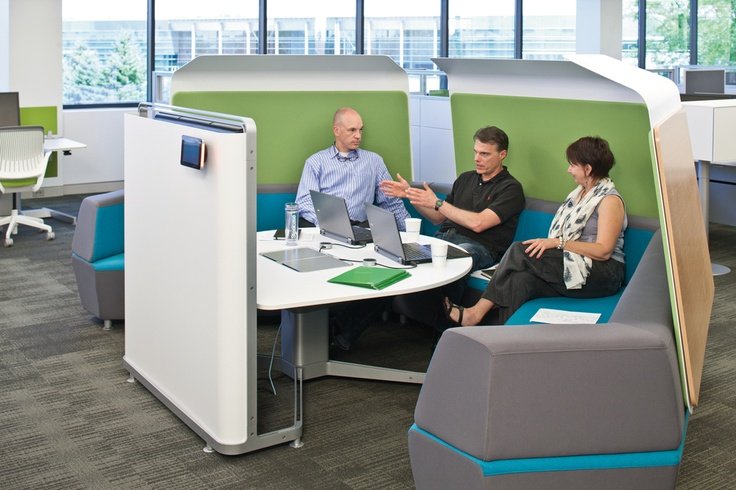
Closed and isolated areas, in fact, kill spontaneity. Research dictates that the furniture and the way it’s placed actually dictates the flow of work and how casual or focused it will be. Flexibility is key here, which is what collaborative areas and furniture are looking to provide. An increasing number of workers are also embracing the remote working culture thanks to advances in technology, which reduces the need for formal workstations.
Embrace the Open-Plan
Most Start-ups will consist of close-knit teams that work closely together. This includes leadership and C-Suite level as well, all sitting together. Ignore the need for separate workstations and invest in benching systems, preferably in configurations that provide each user just the right amount of personal space and storage, but at the same time don’t consume the office space. Open plans are also a lot more inviting and bring about a social vibe at the work space.
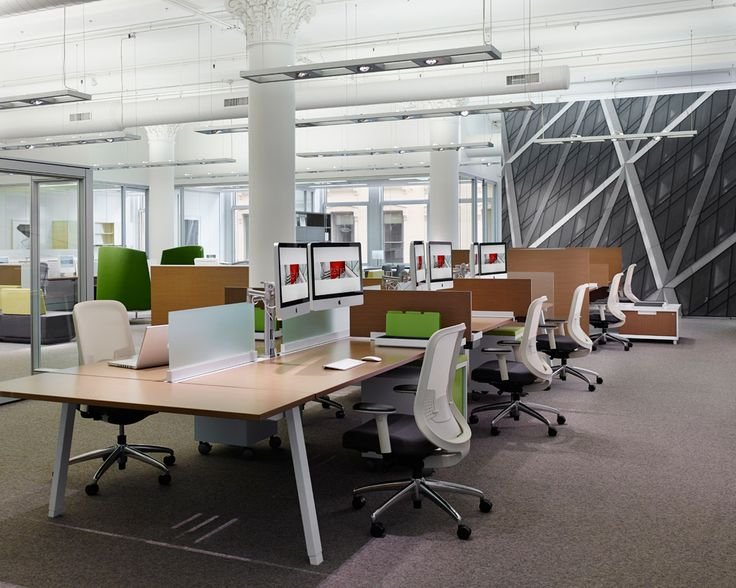
Also try and move away from traditional white furniture and explore some fantastic, low cost laminate options for your work surfaces that are now easily available. They can make all the difference, something we’ll touch on later in this post.
Spaces to Focus
Social media is already a huge distraction. Add to it the constant chatter and noise in the office, caused either by other people, music or machines – can be a huge deterrent to productivity if not controlled. It can be downright distracting or can have a subliminal effect that can lead to a decrease in efficiency in the long term. Identifying this in the very beginning is important. We’ve in fact discussed this before in another great blog post, that you can check out here.
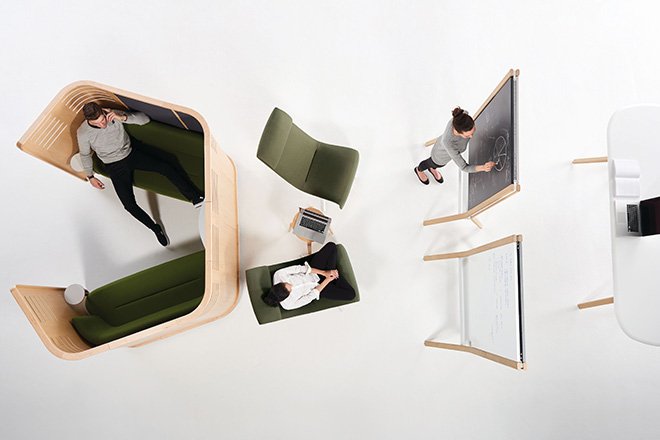
An ideal solution would be to assign specific rooms to be quite rooms; basically a space to get away from the buzz that’s usually found in young start-ups. But small firms may not have the luxury of spare rooms, hence the need to optimize acoustics so you can create ‘ Quiet Zones ‘ as a way for workers to escape, yet stay connected if need be.
Expression through Color
In a generation that finds itself craving for the need to express, share and grab attention, drab old offices with white walls can be an absolute buzz kill. An inexpensive yet creative way to create a personality in the space is to experiment with colors. A great way to do this is to turn a wall(s) into a mural of sorts – a great excuse for a team-building exercise. It could be as simple as hand prints, or an elaborate doodle. Whatever it is, it’ll leave your team with a sense of satisfaction every time they look at it. But different colors have an interesting effect on our mood and productivity, so make sure you choose wisely.
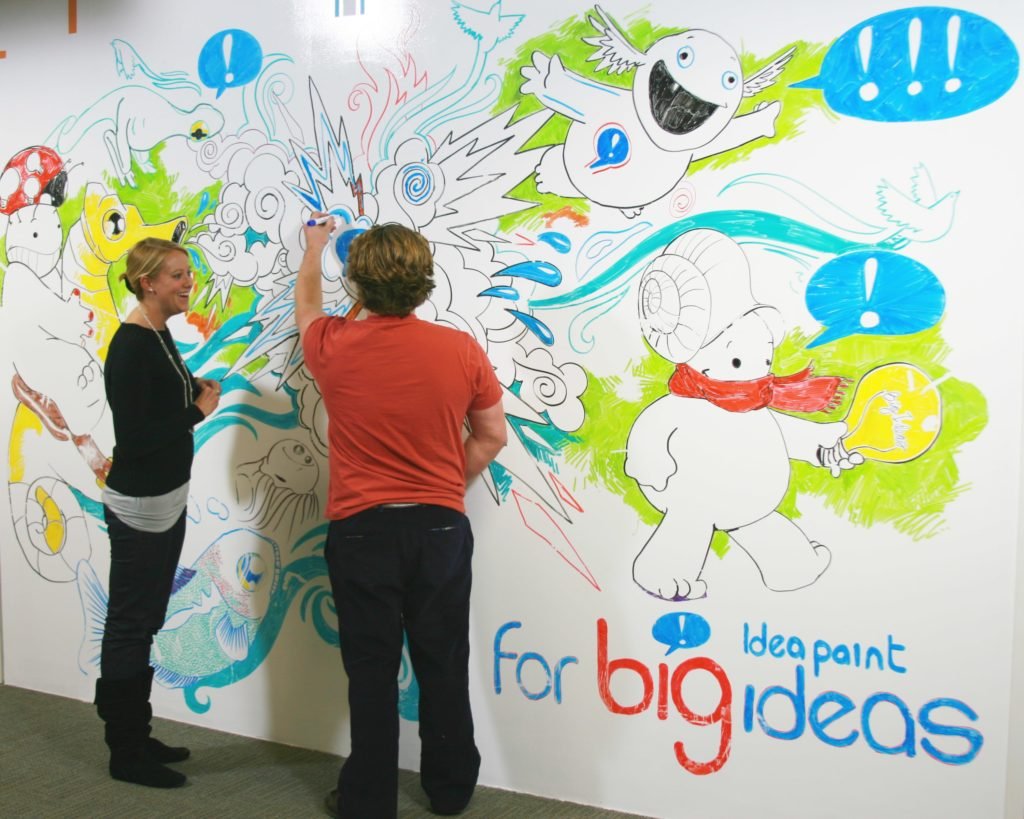
It’s worth noting that large and well established companies are also looking to switch mode to the younger, more dynamic start-up culture to appeal to the younger generation of talent. Investment banking firm JP Morgan is just doing just that, they’ve realized what’s lacking in their traditional strategies, and are exploring innovating and exciting workspace designs and employee well-being as new tools to acquire and retain talent.

